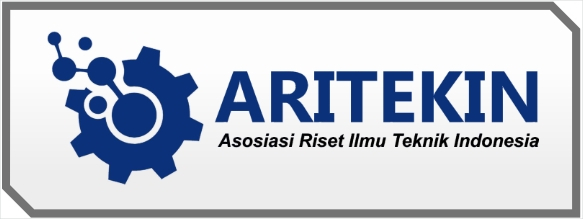Optimization of Acid Wash Process on Activated Carbon with Variation of HCL Concentration at PT XYZ
Abstract
Keywords
Full Text:
PDFReferences
Aminah, Siti, Fanteri Aji Dharma Suparno, dan Haeruddin Haeruddin. 2022. “Preparasi dan Analisis Kandungan Unsur dalam Batuan Bijih Emas.” Jurnal Teknologi Sumberdaya Mineral (JENERAL) 3(1):25. doi: 10.19184/jeneral.v3i1.31352.
Cuhadaroglu, Dilek, dan Oznur Aydemir Uygun. 2008. “Production and characterization of activated carbon from a bituminous coal by chemical activation.” African Journal of Biotechnology 7(20):3706–13.
Cui, Jirang, dan Lifeng Zhang. 2008. “Metallurgical recovery of metals from electronic waste: A review.” Journal of Hazardous Materials 158(2–3):228–56. doi: 10.1016/j.jhazmat.2008.02.001.
Forson, Phipip, Ahmed-Salim Adam, dan Grace Ofori Sarpong. 2018. “Improving Acid Wash Efficiency of Loaded Activated Carbon in a Gold Improving Acid Wash Efficiency of Loaded Activated Carbon in a Gold
Desorption Circuit.” (August 2020).
Ghorbani, Yousef, Jean Paul Franzidis, dan Jochen Petersen. 2016. “Heap leaching technology - Current State, innovations, and future directions: A review.” Mineral Processing and Extractive Metallurgy Review 37(2):73–119. doi: 10.1080/08827508.2015.1115990.
De Gisi, Sabino, Giusy Lofrano, Mariangela Grassi, dan Michele Notarnicola. 2016. “Characteristics and adsorption capacities of low-cost sorbents for wastewater treatment: A review.” Sustainable Materials and Technologies 9:10–40. doi: 10.1016/j.susmat.2016.06.002.
Heidarinejad, Zoha, Mohammad Hadi Dehghani, Mohsen Heidari,
Gholamali Javedan, Imran Ali, dan Mika Sillanpää. 2020. “Methods for preparation and activation of activated carbon: a review.” Environmental Chemistry Letters 18(2):393–415. doi: 10.1007/s10311-019-00955-0.
Ma, Chuan Jing, Jing Ying Li, dan Ren Jie Liu. 2015. “A Review of Thiocyanate Hydrometallurgy for the Recovery of Gold.” Applied Mechanics and Materials 768:53–61. doi: 10.4028/www.scientific.net/amm.768.53.
Mariana, Mariana, Abdul Khalil Abdul, E. M. Mistar, Esam Bashir Yahya, Tata Alfatah, Mohammed Danish, dan Mousa Amayreh. 2021. “Recent advances in activated carbon modification techniques for enhanced heavy metal adsorption.” Journal of Water Process Engineering 43(July):102221. doi: 10.1016/j.jwpe.2021.102221.
Metalliferous Mining. 2010. “Elution and Carbon Reactivation.” Resource Book 1–19.
Petersen, Jochen. 2016. “Heap leaching as a key technology for recovery of values from low-grade ores – A brief overview.” Hydrometallurgy 165:206–12. doi: 10.1016/j.hydromet.2015.09.001.
Pyper, Randall, Cassiday &. Associates, Thom Seal, John L. Uhrie, dan Glenn C. Miller. 2019. “Dump and Heap Leaching.” SME Mineral
Processing and Extractive Metallurgy Handbook 31–48.
Rogans, John. 2012. “Activated Carbon in Gold Recovery.” Kemix (Pty) Ltd (June):1–34.
Salehi, Ehsan, Majid Yarali, dan Abtin Ebadi Amooghin. 2020. “Comparison of adsorption properties of activated carbons with different crops residues as precursors for gold cyanide recovery: An iranian gold industry guide.” Iranian Journal of Chemistry and Chemical Engineering 39(3):213–29. doi: 10.30492/ijcce.2020.34299.
Suliestyah, Edy Jamal Tuheteru, dan Pancanita Novi Hartami. 2018. “Pengaruh ukuran butir batubara dan komposisi batubara-ZnCl2 pada daya serap karbon aktif terhadap logam Fe, Cu dan Zn dalam limbah cair.” Jurnal Teknologi Mineral dan Batubara 14(3):201–12. doi: 10.30556/jtmb.vol14.no3.2018.149.
DOI: https://doi.org/10.31315/jmept.v5i1.11943
Refbacks
- There are currently no refbacks.
Copyright (c) 2024 Fahny Ardian
Journal of Metallurgical Engineering and Processing Technology indexed by:

Journal of Metallurgical Engineering and Processing Technology (JMEPT)
Department of Metallurgical Engineering, UPN "Veteran" Yogyakarta
Metallurgical Research and Development Centre (MRDC)-UPNVY
Gd. Urip Sumohardjo Lt. 2
Jl. Babarsari No. 2, Tambakbayan, Yogyakarta 55281
View My Stats










1.png)
1.png)